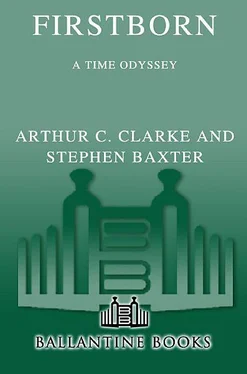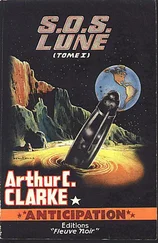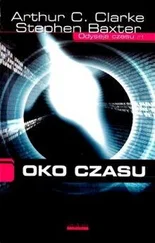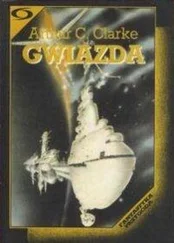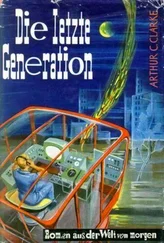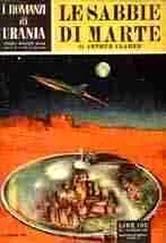The neutrino work was a little coarse however, the particle-detection array standard off-the-shelf gear. Ellie was most animated by her gravity wave detector.
She had devised this herself for the peculiar conditions of the Martian cap. She’d borrowed Hanse’s moles, smart little hot-nosed burrowers intended to explore the interior of the ice. She had had them create a network of long straight-line tunnels through which high-frequency laser light was passed back and forth. The theory was that any change in the peculiar gravity field of the Eye itself, or of the Martian containment cage, would cause the emission of gravity waves. The waves would make the polar ice shudder, and those minute disturbances would be detected as subtle shifts in the laser light.
“It’s a tricky setup,” Ellie said with some pride. “Gravity waves are notoriously weak. Mars is geologically quiet, but you do get the odd tremor. And the polar ice itself flows, minutely. But you can factor all that out. I have secondary arrays on the surface and in orbit. The most impressive is based on a couple of stations on the moons, Phobos and Deimos; when they are in line of sight of each other you get a good long baseline…”
“And with all this stuff you’re studying the Eye.”
“Not just the Eye. The Martian cage as well.”
Ellie said the Eye and the cage of folded spacetime that contained it were like two components of a mutually interlocked system, yin and yang. And it was a dynamic system; the components continually tested each other. This silent, eons-long battle spilled particles and radiation and gravity waves that Ellie was able to detect and analyze.
“In a sense the Martian technology is more interesting to me,”
she told Myra. “Because I have a feeling it’s closer to our own in development level, and therefore we’ve got a better chance of understanding it.”
“Right. And if you can figure it out? What then?”
She shrugged, her motion magnified clumsily by the servos in her suit. “If we could manipulate spacetime there’s no limit to what we might achieve. Architecture beyond the constraints of gravity.
Artificial gravity fields. Anti gravity fields. Reactionless space drives.
Tractor beams. Why, we might even make our own toy universes, like the Mir universe.”
Myra grunted. “You ought to patent this stuff.”
Ellie looked at her through her visor, coolly. “I think ensuring a technology like that gets into the right hands is more important than making money. Don’t you?”
Ellie had a self-righteous streak that Myra didn’t particularly take to. “Sure. Joke.” She was reminded that she was basically unwelcome here. She prepared to leave.
But Ellie called her back.
“There is something else,” she said, more hesitantly.
“Tell me.”
“I’m not sure…” Ellie paused. “Put it this way. I don’t think every element of the gravity-field structure I’m detecting has to do with engineering. There’s a level of detail in there that’s so intricate — I think of it as baroque — it has to have a meaning beyond the functional.”
Myra had lived with Eugene Mangles long enough to be able to detect academic caution, and she decoded that negative statement with ease. “If it’s not functional, then what? Symbolic?”
“Yes. Possibly.”
Myra’s imagination raced. “You think there are symbols in there? In the gravity field? What kind of symbols — writing, images? Recorded in a lattice of spacetime? That’s incredible.”
Ellie ignored that last remark. Myra realized she wouldn’t be saying anything about this unless it were, in fact, credible, and demonstrable. “Writing is a closer analogy, I think. I’m finding symbols of certain kinds, repeated across the field. Glyphs. And they come in clusters. Again, some of those clusters are repeated.”
“Clusters of glyphs. Words?”
“Or maybe sentences. I mean, if each glyph represents a concept in itself — if a glyph is an ideogram rather than a letter.” Ellie seemed to lose a little confidence; she clearly had a scientist’s deep desire not to make a fool of herself. When she spoke again her voice was a bray, her volume control poor, her social skills evaporating with her tension. “You realize how unlikely all this is. We have plenty of models of alien intelligences with no symbolic modes of communication at all. If you and I were telepathic, you see, we wouldn’t need letters and spoken words to talk to each other. So there’s no a priori reason to have expected the Martian builders of this cage to have left any kind of message.”
“And yet, if you’re right, they did.” Myra glared up at the trapped Eye. “Maybe we should have expected this. After all, they made a strong statement just by leaving this Eye here, trapped.
Look what we did. We fought back. We cut off the arm of the monster… I don’t suppose—”
“No, I haven’t decoded any of it. Whatever is in there is complex; not a linear array of symbols, like letters in a row, but a matrix in three-space, and maybe even higher dimensions. If the glyphs are real, they are surely given meaning positionally as well as from their form.”
“There has to be a starting point,” Myra said. “A primer.”
Ellie nodded inside her suit. “I’m trying to extract some of the most common symbol strings.”
Myra studied her. Ellie’s eyes were masked, even behind her faceplate, by her spectacles; her expression was cold. Myra realized she knew almost nothing about this woman, who might be in the middle of making the discovery of the age; they had barely spoken in the long months Myra had been here.
Myra fetched them both coffees. These came in pouches you had to dock to a port on the side of your helmet. She asked, “Where are you from, Ellie? The Low Countries?”
“Holland, actually. Delft. I am a Eurasian citizen. As you are, yes?”
“Forgive me but I’m not sure how old you are.”
“I was two years old when the sunstorm hit,” Ellie snapped. So she was twenty-nine now. “I do not remember the storm. I do remember the refugee camps where my parents and I spent the next three years. My parents discouraged me from following my voca-tion, which was an academic career. After the storm there was much reconstruction to be done, they said. I should work on that, be an architect or an engineer, not a physicist. They said it was my duty.”
“I guess you won the argument.”
“But I lost my parents. I think they wished me to suffer as they had suffered, for the sunstorm had destroyed their home, all they had built, their plans. Sometimes I think they wished they had failed, that the storm had smashed everything up, for then they would not have raised ungrateful children who did not understand.”
This torrent of words took Myra aback. “When you open up, you open up all the way, don’t you, Ellie? And is that why you’re here, working on this Eye? Because of what the sunstorm did to your family?”
“No. I am here because the physics is fascinating.”
“Sure you are. Ellie — you haven’t told anybody else about the cage symbology, have you? None of your crewmates here. Then why me?”
Unexpectedly Ellie grinned. “I needed to tell somebody. Just to see if I sounded completely crazy. Even though you aren’t qualified to judge the quality of the work, or the results.”
“Of course not,” Myra said dryly. “I’m glad you told me, Ellie.”
An alarm chimed softly in her helmet, and her suit told her she was due to meet Hanse for her ride back to the surface. “Let me know when you find out something more.”
“I will.” And Ellie turned back to her work, her cage of instruments, and the invisible gravitational battle of alien artifacts.
Читать дальше
